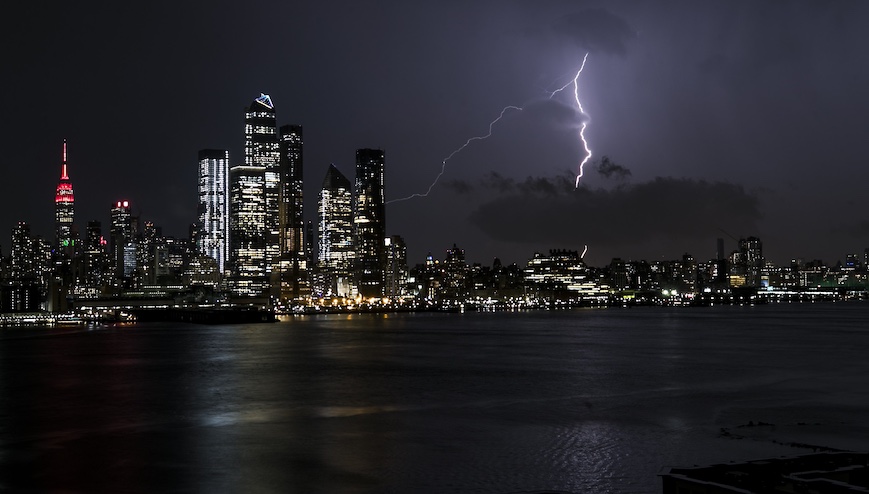For the second night in a row, New York City on Wednesday braced for the possibility of isolated tornadoes, severe thunderstorms, downpours, hail and damaging winds.
The NYC office of Emergency Management sent out an alert Wednesday warning of the dangerous weather, which was expected to hit the city between 5 p.m. and 8 p.m. —yep, prime commuting time. But the wacky weather threat could pose more harm than a simple delay in getting home.
“The increased potential for severe thunderstorms may create dangerous travel conditions this evening,” NYC Emergency Management Commissioner Joseph Esposito said. “New Yorkers should stay inside during periods of severe weather. If you are outside during a thunderstorm, avoid open areas and immediately seek shelter indoors.”
Flash flooding and nuisance flooding could happen, with a half inch of rain expected.
Falling trees also pose a risk. The city activated the Downed Tree Task Force, a multiagency task force responsible for coordinating the response to a large downed tree event.
Staten Island saw a tornado watch on Tuesday night, but lucked out. Stanhope, N.J. wasn’t so lucky — a twister was confirmed to have touched down there, bringing down trees and power lines. No injuries were reported.
What to do if a tornado strikes
Go to your basement or the lowest point of your residence. If an underground shelter is not available, move to a small interior room or hallway on the lowest floor and get under a sturdy piece of furniture. Put as many walls as possible between you and the outside.
Stay away from windows.
Avoid places with wide-span roofs, such as auditoriums, cafeterias, large hallways, or shopping malls.
If you are outside, seek shelter inside a sturdy building immediately if a tornado is approaching.
Being in a vehicle during a tornado is not safe. The best course of action is to drive to the closest shelter or building. If you are unable to make it to a safe building, do not try to outrun a tornado in your vehicle. Either get down in your vehicle and cover your head with your hands, or abandon your vehicle and seek shelter in a low-lying area such as a ditch. Do NOT take cover under an overpass or bridge.
Be aware of flying debris.
Stay tuned to your local radio and television stations for the latest storm information.



















